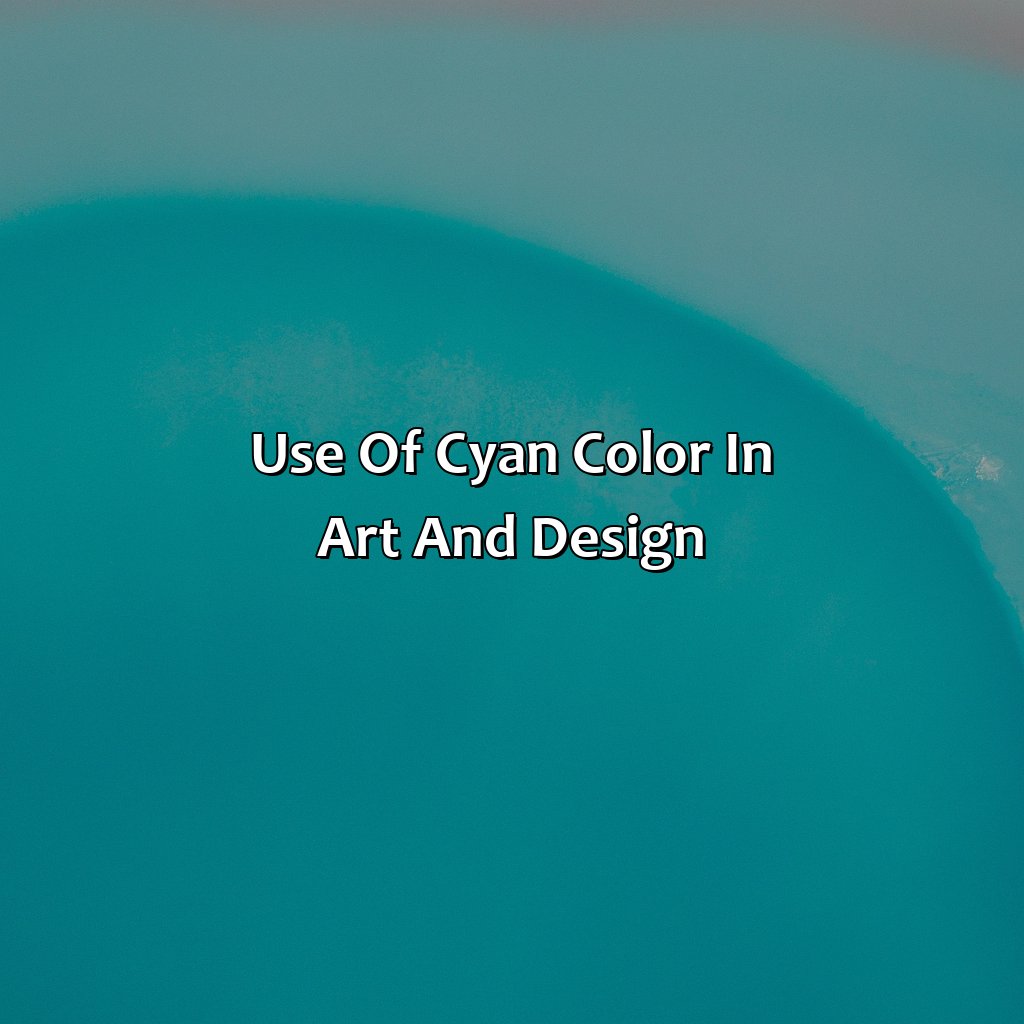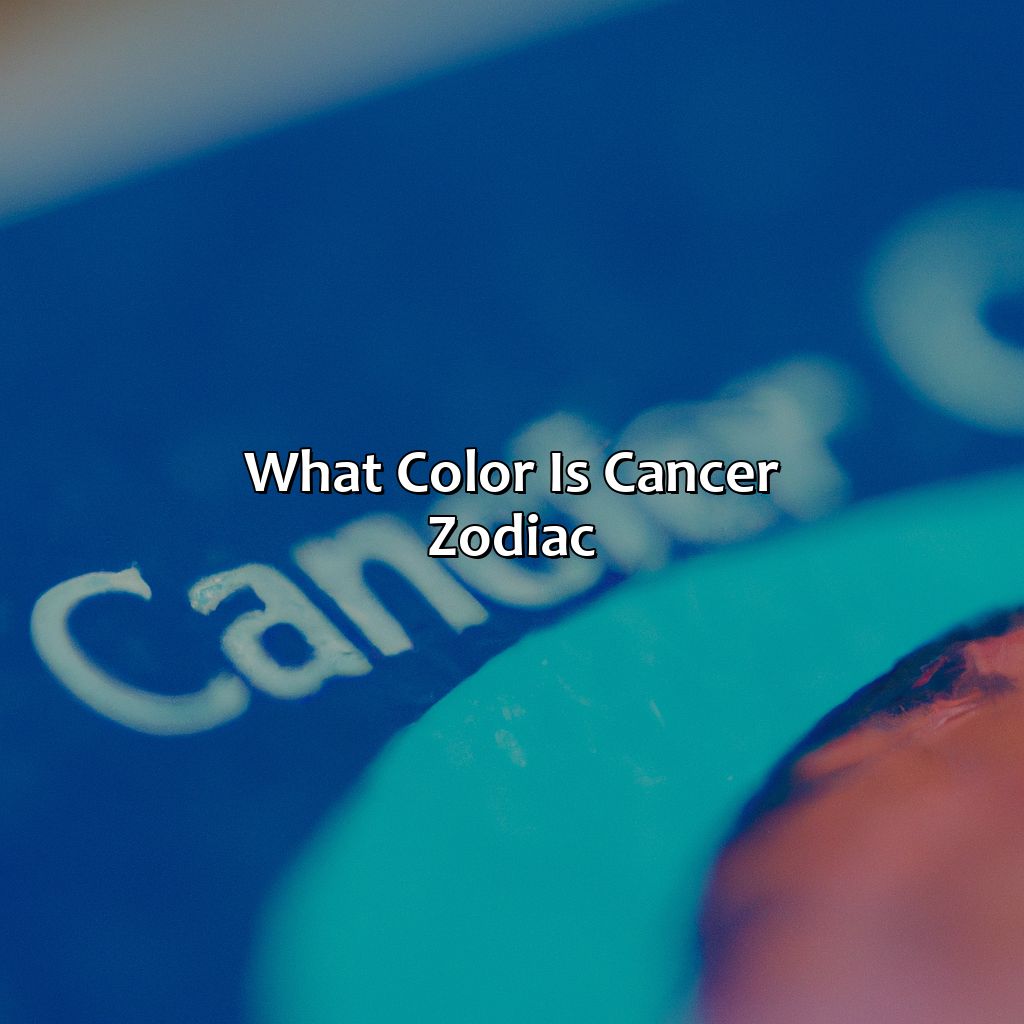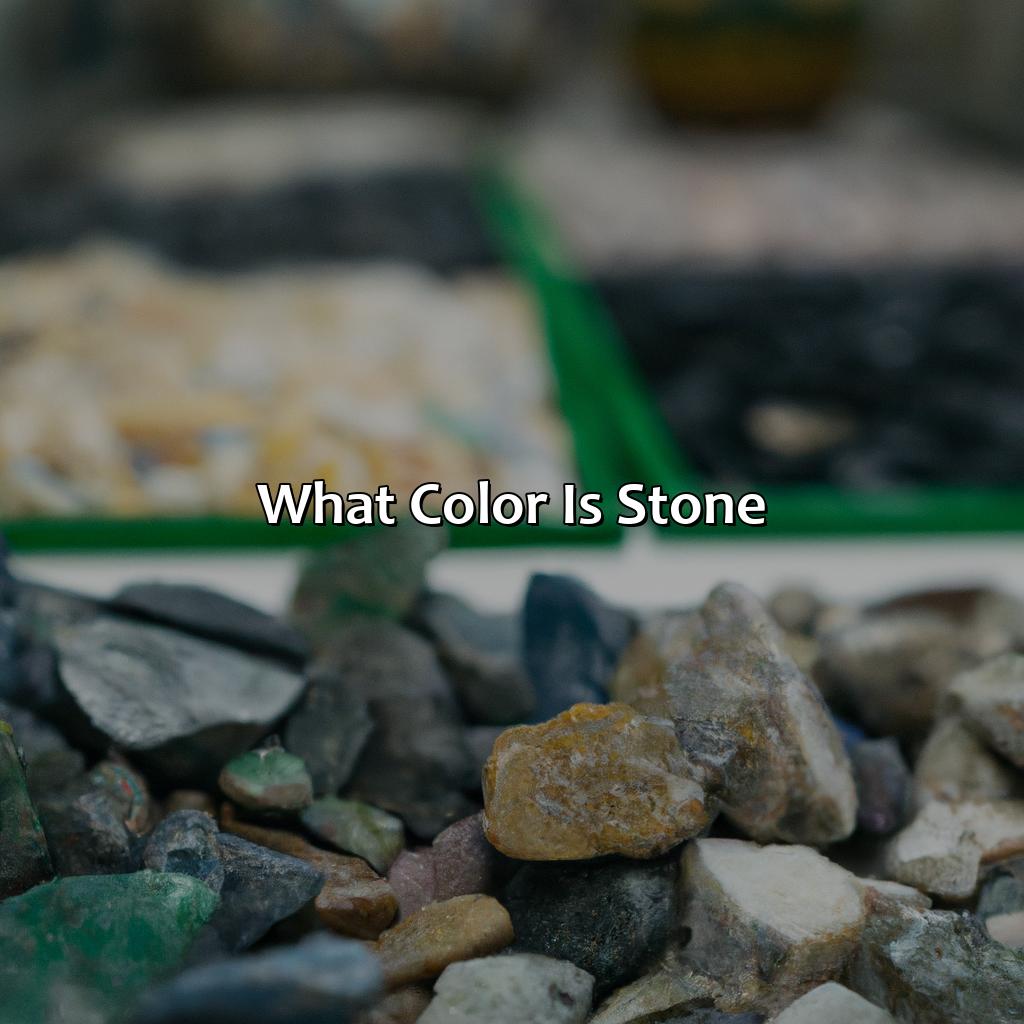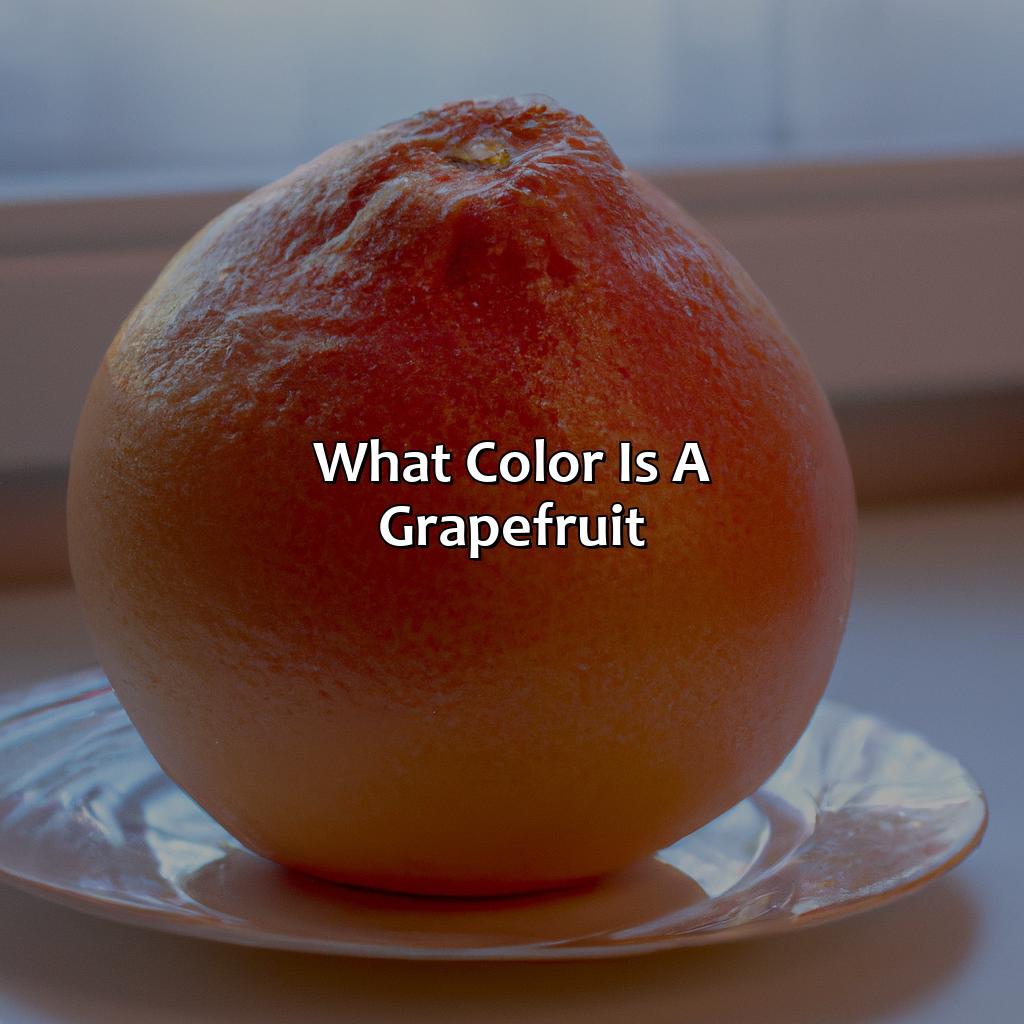Key Takeaway:
- Cyan color is a blue-green shade that is defined by its specific tone and hue, and is commonly used in art, design, and culture.
- The characteristics of cyan color include its cool and calming nature, as well as its association with clarity and cleanliness.
- Throughout history, cyan color has been used in various cultures and art forms, and has symbolized different things such as trust, loyalty, and healing.
Key Takeaway:
- Cyan color has many shades, including light and dark variations, which can be used to convey different moods and emotions.
- Psychologically, cyan color is associated with a sense of calm and relaxation, and can be used to promote focus and mental clarity.
- Culturally, cyan color has different meanings, from representing joy and celebration in some cultures to symbolizing mourning and grief in others.
Key Takeaway:
- Cyan color is widely used in art and design, both in traditional forms such as painting and in contemporary forms such as digital design.
- In traditional art, cyan pigments were historically used in watercolors and printing inks, while in contemporary design, it is used for branding, logos, and web design.
- The importance of cyan color lies in its versatility and range of meanings, making it a powerful tool for communication and expression in various fields.
Defining cyan color

Photo Credits: colorscombo.com by Jeremy Carter
To grasp what cyan color is, investigate its hue, tone, and special characteristics. To totally comprehend cyan, explore how it stands out from other hues. Also, its history gives an understanding of its cultural importance and how it has changed over time.
Characteristics of cyan color
Cyan color is distinct yet ubiquitous in our daily lives. It holds unique characteristics that distinguish it from the rest of the colors on the spectrum. Its traits can be attributed to its composition and physics of light reflection.
A table showing the characteristics of cyan color can provide a better understanding of its attributes.
| Characteristics | Values |
|---|---|
| Saturation level | Medium-high |
| Luminosity | High |
| Hue Angle | 180 degrees |
| RGB value | (0,255,255) |
| CMYK value | (100%,0%,0%,0%) |
| HEX code | #00FFFF |
Cyan color has an indirect psychological impact on our minds by enhancing creativity and imagination. Moreover, it is beneficial for reducing stress levels. The cultural significance of cyan can be attributed to various cultures’ traditional beliefs regarding peace, harmony, and vitality.
I remember spending summers admiring majestic Blue Mahoe trees near my grandparents’ home—they had rich cyan-colored flowers that added charm to their garden’s ambiance. Cyan color has a rich historical background, but don’t worry, this won’t be a snooze-fest like your high school history class.
Historical significance of cyan color
Cyan has played a significant role in the history of color. Cyan dates back to ancient times where it was discovered as a by-product of copper production. It was known as “phthalo” green due to its resemblance to verdigris, which is a result of copper oxidation. Cyan first became popular during the Renaissance period and was used by artists like Leonardo Da Vinci and Michelangelo.
During the 19th century, synthetic pigments were developed that allowed cyan to be used on a larger scale in printing technology. The blue-green hue provided a much-needed break from the traditional black ink, leading to an explosion of colorful printed materials.
The use of cyan continued to grow with advancements in photography, where cyanotypes became popular in the early 20th century. Not only did cyan coloring provide a striking visual impact, but it also had practical applications when making blueprints or documents that needed resistance against light exposure.
Pro Tip: Understanding the history of cyan is important for designers and artists who want to use this color effectively in their work. Knowing its roots can help you create more purposeful designs that align with historical significance.
From light to dark, the many shades of cyan color leave us feeling blue in the best way possible.
Shades of cyan color

Photo Credits: colorscombo.com by Gerald Nelson
The color cyan has a wide range of shades that vary from light to dark. These shades can be identified by their saturation and brightness levels.
A table displaying the various shades of cyan color can be seen below:
| Shade | Saturation | Brightness |
|---|---|---|
| Light Cyan | High | High |
| Powder Blue | Low | High |
| Pale Cyan | Low | Low |
| Dark Cyan | High | Low |
| Teal | Medium | Low |
| Electric Cyan | High | Very High |
It is noteworthy that cyan is often associated with serenity, innovation, and stability. The light cyan color is often used to convey calmness, while darker shades are more commonly linked to strength and stability. Teal is a popular shade that mixes green and blue and can convey a sense of sophistication.
In the 1940s, cyanide was used by prisoners to commit suicide in Nazi concentration camps. The word cyanide is derived from the color cyan, as the substance produces a blue-green hue when it reacts with certain chemicals. This true story highlights the darker connotations that cyan can hold.
Symbolism and psychology of cyan color

Photo Credits: colorscombo.com by Wayne King
The color cyan has a symbolic and psychological effect. So, let’s explore its cultural significance and emotional/psychological impact. We’ll discuss each of these sub-sections briefly. Cultural significance first, then emotional and psychological impact.
Cultural significance of cyan color
Cyan color holds immense cultural significance and represents various emotions across different cultures. It has been portrayed as the color of spirituality, hope, and water in African cultures. In Ancient Egypt, cyan was believed to symbolize regeneration and rebirth. The color has a strong connection with Eastern Asia and is known to depict success, loyalty, and intelligence.
In Japan, the shade of cyan called ‘Mizu’ is used in weddings which signifies affection and purity. In China, it is considered a lucky color that brings prosperity. Additionally, in Hinduism, cyan or teal colors represent energy centers or chakras that are related to communication and self-expression.
Cyan color has a significant role in Western culture too; it stands for trustworthiness hence it can be seen in logos related to banks and financial institutions. On the other hand, sporting teams around the world also see cyan as their team’s color signifying movement and fluidity.
To sum up, the cultural significance of cyan color varies globally but holds a significant emotion that resonates with each community. Understanding the psychological aspects of this color can lead to better communication across different groups with varying beliefs. Applying certain hues of into your designs maybe beneficial depending on what type of message or feeling you want to convey it can be uplifting or calming depending on how you use it.
Feeling blue? Try cyan for a psychological boost.
Emotional and psychological impact of cyan color
Cyan color has a profound emotional and psychological impact. It evokes feelings of calmness and serenity, which is why it’s often associated with relaxation, tranquility, and peace. People wearing clothes in this shade exude confidence and intelligence, making them stand out in a crowd. Its ability to stimulate creativity makes it popular among artists.
The psychological impact of cyan color can vary depending on its context. In graphic design, cyan may symbolize purity and cleanliness, while in the fashion industry, it’s associated with elegance and sophistication. Cyan’s mix of blue and green promotes balance between the mind and body characterizing honesty, creativity, tranquility, clarity, renewal which brings positivity into one’s life.
What sets cyan apart is its chameleon-like quality that allows it to change meaning based on its surroundings. It contributes to contrasting shades by creating comfortable warmth when matched with middle or light-weight white or cool when paired with darker tones.
In a study conducted by color psychologists at the University of Manchester UK, comparing test results found cyan increased focus compared to red. This proved true for people across different age groups studying different subjects.
A personal account: My friend struggled with anxiety; we decided to paint his office wall in cyan color as recommended by his therapist. Soon his symptoms subsided as the calming effect helped him relax while working from home.
Cyan is the chameleon of colors, seamlessly blending into both traditional art forms and contemporary design.
Use of cyan color in art and design

Photo Credits: colorscombo.com by Zachary Martinez
We explore cyan color in art and design. To do this, we have split it into two sections. The first talks about cyan in traditional art forms. The second looks at its use in contemporary design and visual art.
Usage in traditional art forms
Traditional Art Forms Utilizing Cyan Color
Cyan color has played a crucial role in art forms across the globe since ancient times. With its unique characteristics and significance, cyan continues to influence traditional art forms today.
| Traditional Art Forms | Use of Cyan |
|---|---|
| Chinese Painting | Often used as a base layer for landscapes and seascapes |
| Persian Miniature Art | Used as a primary color in intricate floral and geometric designs |
| Japanese Ukiyo-e Prints | Commonly utilized in prints featuring water bodies and natural elements |
| Indian Madhubani Art | Used to create vibrant nature-inspired motifs on walls and floors |
These traditional art forms have utilized cyan color in unique ways to create visually stunning pieces that have captivated people for centuries. Moreover, the use of cyan color in traditional art forms is not just limited to these examples. Other cultures like the Egyptians, Greeks, Romans, and Mayans also extensively used it in their artworks.
A true story of traditional cyan-colored artwork comes from the Indonesian Batik weaving tradition. The technique uses wax-resist dyeing to create intricate patterns with bold colors like cyan. The process involves skilled artisans applying melted wax onto the fabric using canting tools or stamps creating layers of design with each successive dyeing process leading to mesmerizing patterned cloth.
Design and visual art have embraced cyan like a close friend, using its cool charm to create eye-catching and modern compositions.
Contemporary usage in design and visual art
Contemporary applications of cyan have become a popular trend in today’s design and visual art industries. The shade is often used to convey feelings of tranquility, serenity, and clarity. It is also utilized in digital technologies such as website designs and advertisement graphics.
Cyan is a favorite among graphic designers since it creates a subtle contrast with other colors while maintaining its uniqueness. Incorporating the color into logos is popular due to its fresh and modern look. Modern packaging designs also widely use shades of cyan to imply freshness.
In addition, cyan lighting is often found in contemporary interiors providing an ambiance that promotes relaxation and purity among occupants. In short, contemporary usage of the color in design and visual art brings a unique aesthetic appeal to products, spaces, web pages, and brand identities.
Interestingly, some professional photographers use cyanotypes or blue-printing technique for their photography projects that add diversity through adventurous ways of developing photographs.
Some Facts About the Color Cyan:
- ✅ Cyan is a greenish-blue color that is commonly found in nature, such as in the feathers of peacocks and the wings of butterflies. (Source: Sensational Color)
- ✅ Cyan is one of the primary colors in the subtractive color model, along with magenta and yellow. (Source: Techopedia)
- ✅ The RGB color model uses varying amounts of red, green, and blue light to create different shades of cyan. (Source: RapidTables)
- ✅ Cyan is commonly used in printing and graphic design as a process color for creating shades of blue and green. (Source: Alan Kitching)
- ✅ The word “cyan” comes from the Greek word “kyanos,” which means dark blue or blue-green. (Source: Dictionary.com)
FAQs about What Is The Color Cyan
What is the color cyan?
Cyan is a greenish-blue color that sits between blue and green on the color spectrum. It is created by mixing equal amounts of blue and green pigments.
How is cyan different from blue and green?
Cyan is similar to both blue and green, but it has its distinct qualities. It is brighter than blue and has a colder hue than green. It is also often associated with a sense of tranquility and calmness.
What are the common uses of the color cyan?
The color cyan has many uses in different fields. It is widely used in the printing industry to produce vivid and bright colors. It is also used in web design, as it is believed to enhance user experience. It is also used in the medical field to indicate a mild level of oxygenation, and it is a popular color for swimwear and diving equipment.
What are some variations of the color cyan?
Some variations of the color cyan include aqua, teal, and turquoise. These colors differ from true cyan in the amount of green or blue they contain.
What emotions are associated with the color cyan?
Cyan is often associated with calmness, serenity, and tranquility. It can also evoke feelings of confidence, trust, and stability. In some cases, it can also evoke feelings of sadness or melancholy when used in a dull or muted shade.
What color combinations work well with cyan?
Cyan pairs well with many colors, including white, black, gray, and silver. It also complements other shades of blue, green, and pink. It can be used to create a monochromatic look or combined with bright and bold colors for a pop of contrast.






